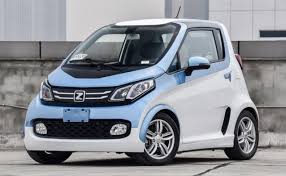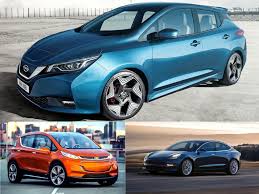How to make the transition to electric vehicles simple and convenient for consumers
 As the demand for electric vehicles begins to go beyond the usual forecasts, the transition from petrol and diesel vehicles to electric vehicles should become easier and more convenient for consumers.
As the demand for electric vehicles begins to go beyond the usual forecasts, the transition from petrol and diesel vehicles to electric vehicles should become easier and more convenient for consumers.
One of the initial problems associated with electric vehicles is the availability of a sufficient number of charging points. Many people have a question where to find the nearest charging station or point. So far, charging stations, unlike petrol stations, are not so well developed, they are often difficult to see from the road. Chargers are often located in an inconspicuous place, for example, in a quiet, poorly lit corner of a shopping Park.With the increase in the number of electric vehicles on the roads, this problem is becoming more urgent for more drivers. And as the range of electric cars continues to increase, drivers naturally expect to be able to charge their electric cars on the go, not just at home. For example, the new Renault ZOE will be able to drive 390 km without recharging, when it becomes available later this year, and Tesla Model 3, which recently appeared on the European market — 500 km Electric cars are no longer just a commuter car.
The good news for electric cars is that these problems are solved quickly. There are many smartphone apps that will show you the location, number, occupancy and type of charging points, as well as include an intelligent route planner.
The growing demand for electric cars creates another problem — the queue for charging. No one likes to wait long for their turn to charge. Fortunately, the number of public charging points is now increasing rapidly, from about 150,000 in Europe today to the expected 300,000 by 2022. The expansion of charging infrastructure in China, which is the largest electric vehicle market, is progressing at an even faster pace, with several million chargers expected by 2022.
As the number of electric vehicles on the roads grows, companies such as Total and Shell install charging points at their gas stations on highways and elsewhere. For such investments there is a convincing economic justification — a decrease in demand for diesel fuel and the expected growth in the popularity of electric vehicles. Electric car drivers who stop at gas stations to charge also spend money on food while they wait.
The European joint venture to build charging stations for electric vehicles Ionity plans to open 400 fast charging stations in 23 European countries by the end of 2020.
McKinsey estimates that $50 billion will be invested in the charging infrastructure by 2030, of which $17 billion will go to the charging infrastructure in Europe. Millions of additional public charging points will make electric cars affordable and convenient for those who can’t charge at home.
Local authorities and building management companies can relax regulations and eliminate red tape, as planned in the UK, which sometimes delays or even hinders the installation of charging points.
As long as private companies make the bulk of the necessary investments, the government and local authorities can provide tax incentives. Installing multiple chargers in the office and other work locations will be a cost effective approach that will allow drivers to charge their cars while working.




